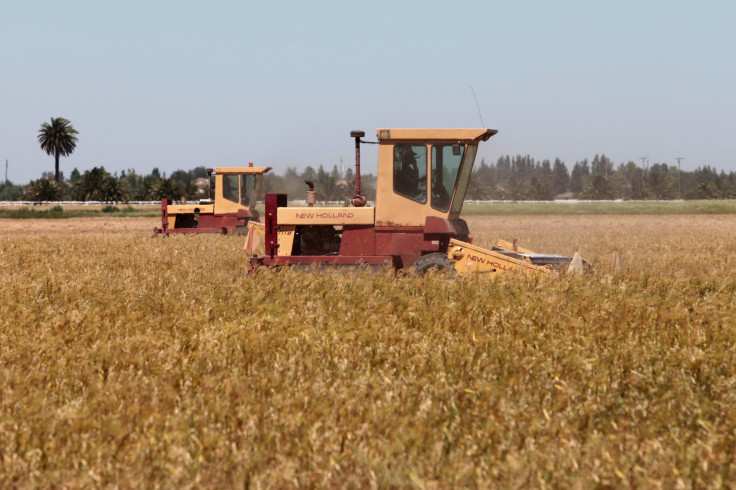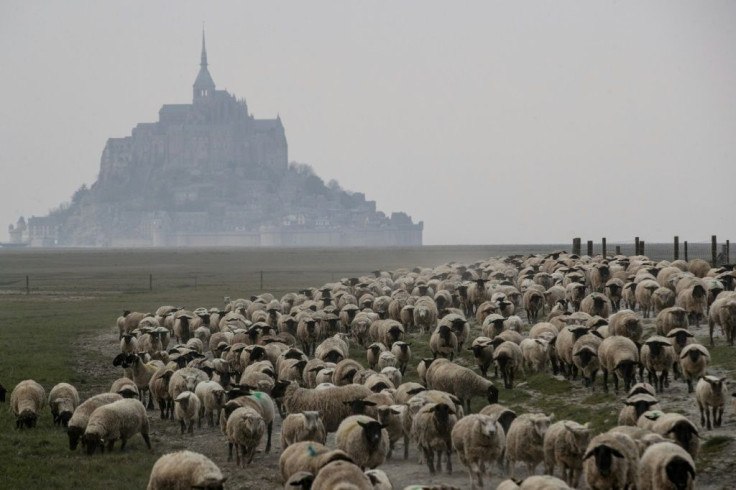Another Coronavirus Shock: Rice, Wheat Prices Surge As Countries Hold On To Food Grain Stocks

KEY POINTS
- Lockdowns have disrupted supply chains and caused shortages in many countries
- Good crops have not benefited producers markets not accessible
- Lockdowns have disrupted the movement of migrant labor, affecting harvests
Rice and wheat prices have surged across the globe as supply chains are under strain from the coronavirus pandemic that is limiting labor availability and prompting producing countries to stockpile food grains. The situation is worsening even as inventories are rising with the producers because the pandemic has hit global shipping.
Rice prices have hit a seven-year high, Reuters data shows. The price of the 5% broken white rice — the industry benchmark — rose 12% from March 25 to April 1, according to the Thai Rice Exporters Association. Rice prices are now the highest since late April 2013.
Panic buying pushes up wheat futures
Wheat futures on the Chicago Board of Trade were also hit by the coronavirus outbreak. The price of wheat futures rose about 15% in the second half of March due to panic buying by consumers and lockdown worries in North America and Europe, a CNBC report says.
The lockdowns have disrupted the movement of migrant labor and created extreme situations. Farmers in India are unable to handle the inventory buildup amid the breakdown of the logistics channels. Strawberry farmers of Satara in the western Indian state of Maharashtra are feeding strawberry piles to cows as there is no way for them to take the produce to cities, a Reuters report said. Indian Prime Minister Narendra Modi declared a 21-day nationwide lockdown on March 25 to contain the surge in coronavirus cases across the country and has since extended it up to May 3.
Similar reports are coming from agricultural economies across the world.

Ample rice stocks in Asia but contract delivery hit
Asia produces 90% of the world’s rice supplies and consumes most of it. Indian rice traders have stopped signing new export contracts as labor shortages and logistical disruptions have hit the delivery of existing contracts, the CNBC report said. Vietnam, the third biggest rice exporter, has also imposed export curbs.
Disruptions attributed to the coronavirus hit in March even as rice prices were climbing from late 2019 due to a severe drought in Thailand and a rise in demand in Asia and Africa. Thailand is the world’s second-largest exporter after India and ahead of Vietnam.
The Thai Rice Exporters Association said in a recent report that rice stocks are ample but acknowledged difficulties in procuring labor amid the virus outbreak as Cambodian laborers headed home due to a nationwide lockdown.
A recent report of the International Grain Council said it was aware of the sharp upturn in the near-term demand of rice amid movement constraints and quarantine measures, according to the Reuters report.
“Unlike other sectors, agriculture is heavily affected by the timing of the lockdown rather than the duration because of the strict planting and harvesting calendar,” Samarendu Mohanty, Asia regional director at the Peru-based International Potato Center, told Reuters. “If the planting season is missed, there will be no crop for the season or for the entire year.”
In lockdown-hit India and other South Asian countries, the labor shortage has affected the harvesting of winter crops like wheat, potato, cotton, and some fruits and vegetables as migrant workers are away.
Similar labor shortages are plaguing North America, Europe, and China and causing supply line disruptions for spring planting, Mohanty added.
“If they miss the planting window, they are done for the entire year.”
© Copyright IBTimes 2024. All rights reserved.





















